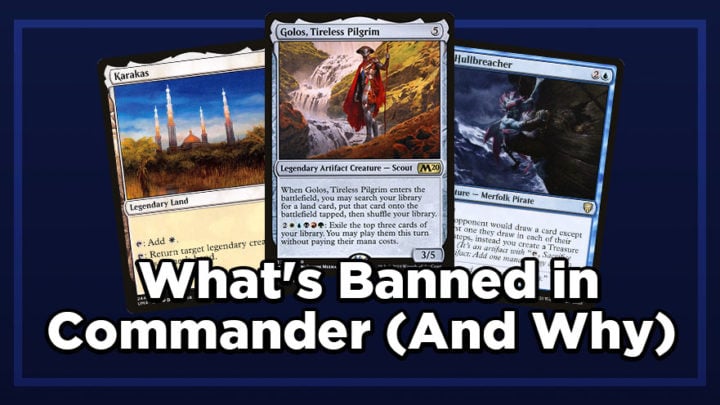If you’ve found yourself on this page, chances are you’d like to know exactly what cards are banned in Commander. Below we have a rundown of what cards are banned in Commander, followed up by some explanations of why we think they’re banned.
Cards Legal in Commander
All regular-sized black- and white-bordered Magic cards publicly released by Wizards of the Coast are legal to play with in Commander. This means that silver-bordered cards are not legal in Commander — they are not covered by the Comprehensive Rules and not legal in constructed formats.
New black- and white-bordered cards are legal as of the Prerelease event for the corresponding set, or — in the instance of supplemental products, like Commander decks — on the release date.
List of Cards Banned in Commander
First off, let’s list the cards that are banned:
- Ancestral Recall
- Balance
- Biorhythm
- Black Lotus
- Channel
- Chaos Orb
- Dockside Extortionist
- Emrakul, the Aeons Torn
- Erayo, Soratami Ascendant
- Falling Star
- Fastbond
- Flash
- Golos, Tireless Pilgrim
- Griselbrand
- Hullbreacher
- Iona, Shield of Emeria
- Jeweled Lotus
- Karakas
- Leovold, Emissary of Trest
- Library of Alexandria
- Limited Resources
- Lutri, the Spellchaser
- Mana Crypt
- Mox Emerald
- Mox Jet
- Mox Pearl
- Mox Ruby
- Mox Sapphire
- Nadu, Winged Wisdom
- Paradox Engine
- Primeval Titan
- Prophet of Kruphix
- Recurring Nightmare
- Rofellos, Llanowar Emissary
- Shahrazad
- Sundering Titan
- Sylvan Primordial
- Time Vault
- Time Walk
- Tinker
- Tolarian Academy
- Trade Secrets
- Upheaval
- Yawgmoth’s Bargain
In addition to these cards, there are a number of other cards banned in Commander, too. These are:
- All cards that refer to the ante mechanic. Ante states that players must permanently give up cards that have been put in the ante zone if they lose the match. Understandably, this is not feasible in general casual play, and even less feasible in multiplayer, where the bad feelings can be much worse.
- All Conspiracy cards. These cards were not designed with Commander in mind and are essentially free value. They start in the Command Zone and would change the way decks are built for the format. Players who choose not to use them would be at a big disadvantage — why wouldn’t you use Brago’s Favor to make your commander cost one less?
- Cards Wizards has removed from constructed formats as they are racially or culturally offensive.
Why are the banned cards banned?
While the reasons these last three groups of cards are banned are pretty straightforward, you might be wondering about the rest of the cards on the list.
To understand the Commander banlist, we need to acknowledge that it was initially based on the Legacy banlist, which had already been put together from plentiful data on what cards were too strong for that format.
The Power Nine
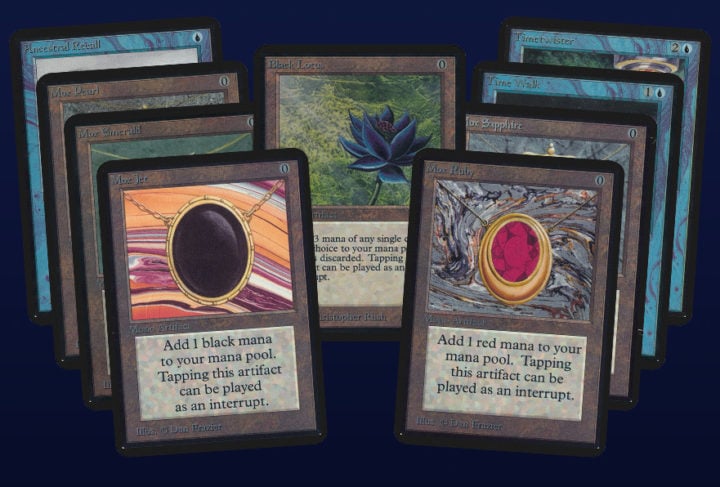
Ancestral Recall, Black Lotus, Mox Emerald, Mox Jet, Mox Pearl, Mox Ruby, Mox Sapphire, Timetwister, and Time Walk make up the fabled “Power 9”: nine rare cards found in Alpha, Beta and Unlimited that are widely considered the most powerful ever printed. Eight of these nine cards are on the Commander banlist, with Timetwister being the exception.
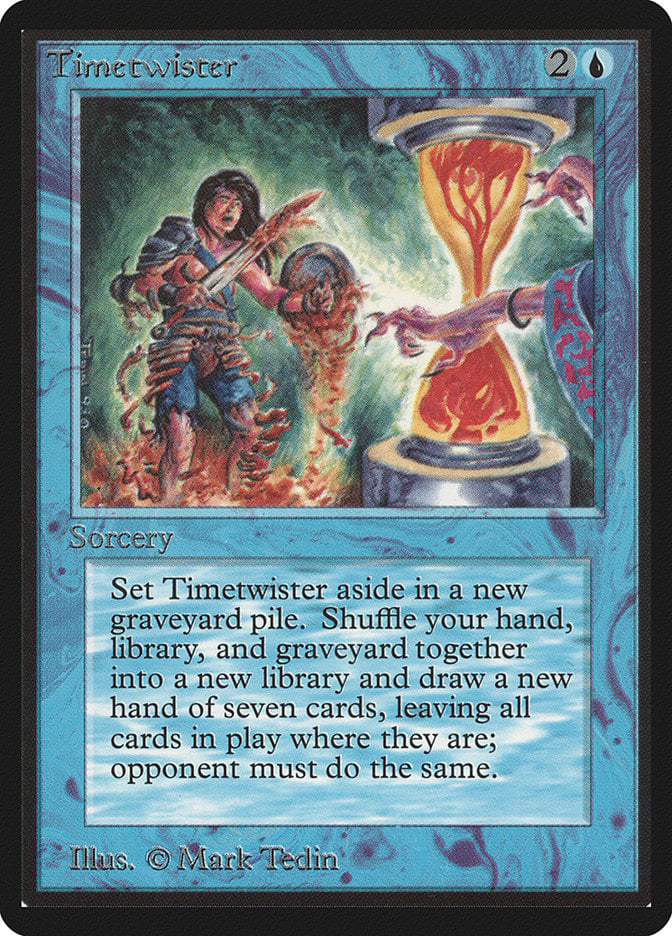
Timetwister wasn’t banned at the outset because it isn’t quite as powerful in a singleton format, and because in games of Commander, there’s often more value in casting a card like Time Spiral instead. When it comes to the other eight? There’s nothing quite as potent as free, fast mana or spending just two mana to take an extra turn. These cards were also added to the banlist to acknowledge their rarity and high asking price — the few players who could access these extremely scarce cards would have an unfair advantage over those who can’t.
Cards That Are Too Powerful

In a format with 40 as the starting life total, you can break Channel wide open without risking instant death from Lightning Bolt. Cheating an Eldrazi out turn one is the least you can do with this spell, and giving people the opportunity to do pretty much anything they like unrestricted by mana is always dangerous — doubly so for multiplayer.

When a seven-mana Meteor Golem is the current standard for unrestricted removal, it’s easy to see why Chaos Orb is too powerful to be legal. It’s a three-mana effect that is annoying to adjudicate, fits in basically every deck, and is very, very expensive. Add on the accessibility issues that cards that require dexterity generate, and it’s a hard no on this Vintage staple.

Extremely hard to remove, impossible to counter. The biggest evasive creature in the game, Emrakul not only gives you an extra turn when you cast it, but also forces defending players to sacrifice six permanents whenever it attacks. It’s simply very hard to beat, and centralizes the metagame around ramping into this card.
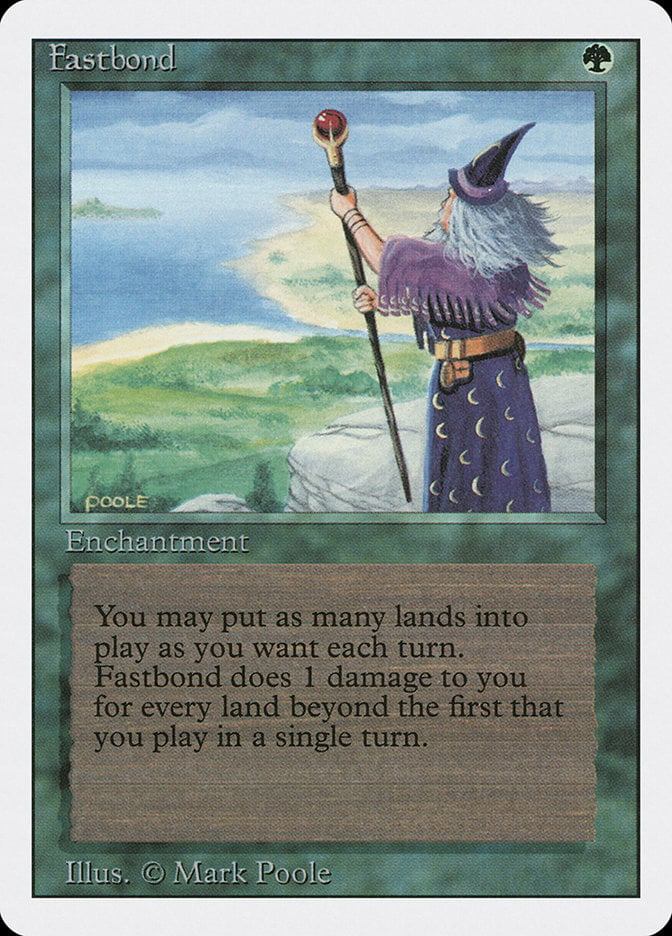
Fastbond, like Channel, is simply too powerful for Commander. In the right deck, it’s entirely possible to untap with mana in the double digits on turn two, and that’s if you haven’t won the game first. More often, players will end up dropping expensive stax pieces into play early and lock their opponents out of the game before it even starts. Or, you know, repeatedly Wastelanding three other players’ lands with a Crucible of Worlds. Great in Cube, gross in Commander.
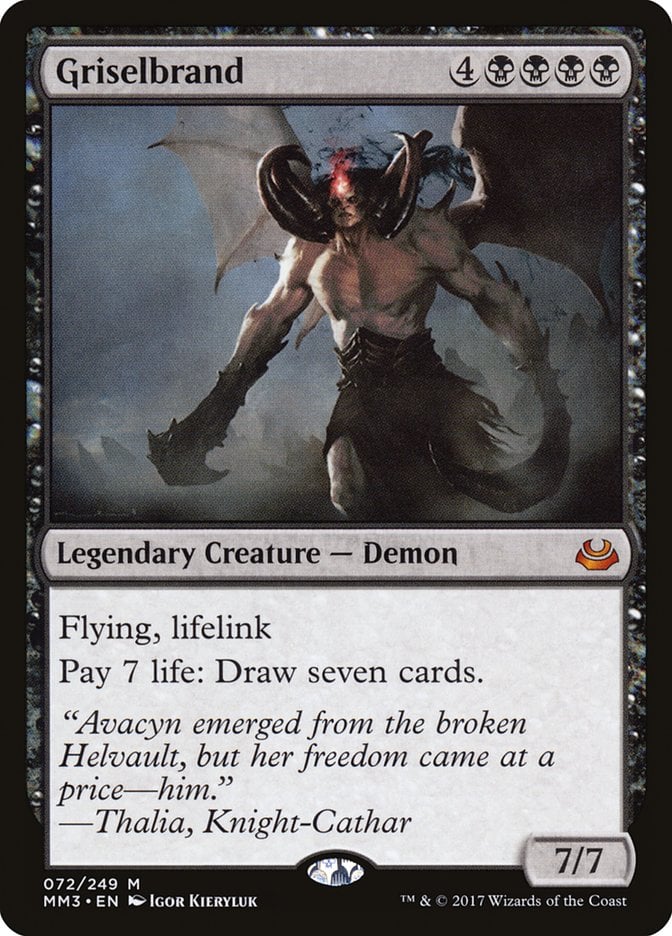
Griselbrand is a notoriously powerful reanimator target, and in formats with a starting life total of 20, he can get out of hand quickly. In a format with 40 life? You can draw half your library with ease to find the win condition you need. He’s just that good.
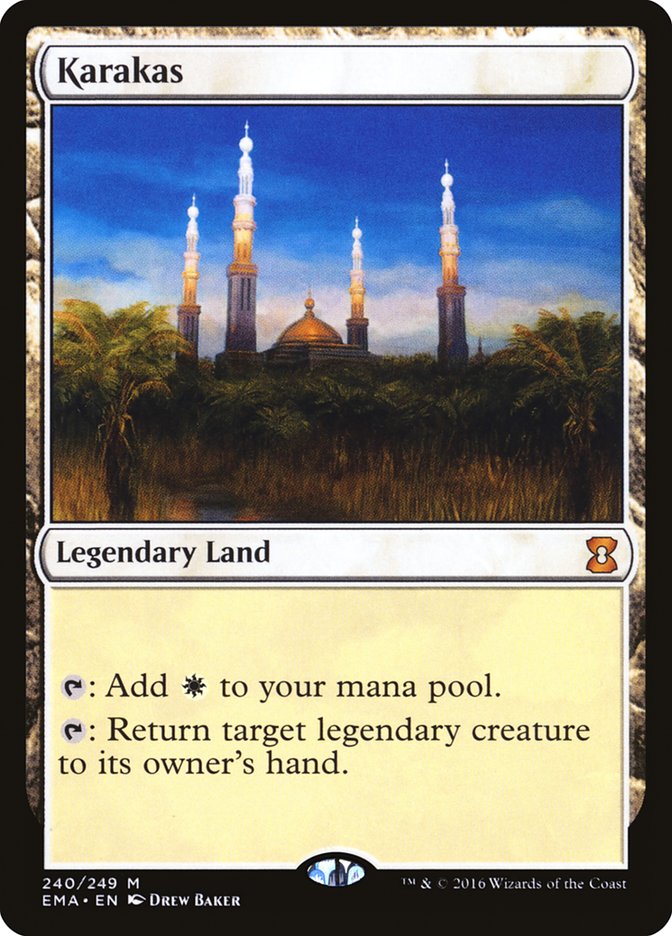
In a format that revolves around legendary creatures, Karakas is flat-out too strong. If it were legal, it would be an auto-include, and it would push as many people into white as Fastbond and Ancestral Vision push into green or blue.
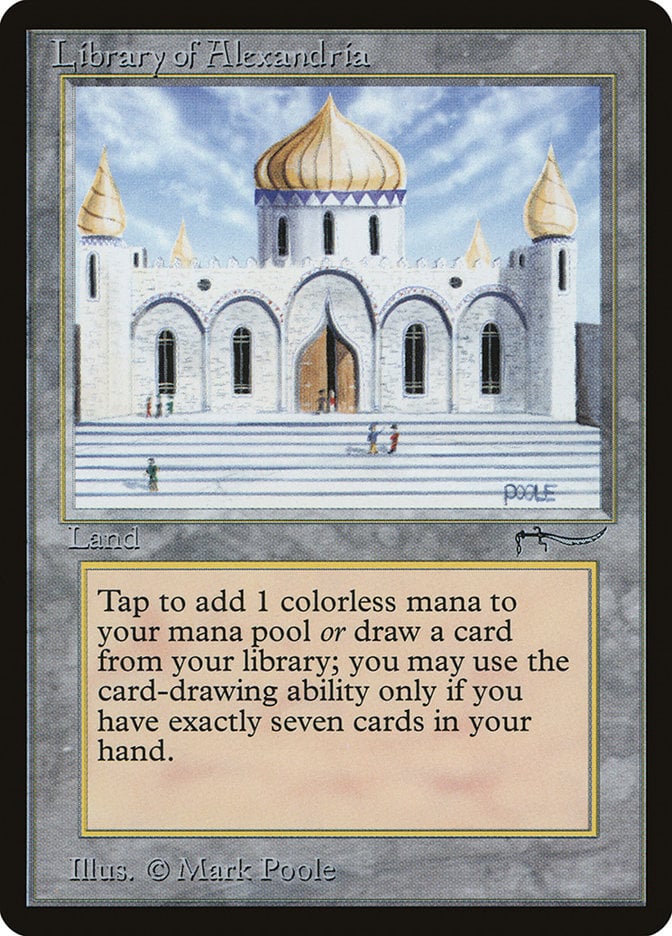
Library of Alexandria is one of the most powerful lands ever printed, and thanks to the fact it fits in every single Commander deck — but can be obtained by very few, because of its rarity — it had to be banned from the outset.

Given the deckbuilding restriction to play Lutri is only that you are literally playing the format as intended, it’s simply too powerful a card to be allowed to exist. Any deck that supports red and blue would essentially be able to play one extra card over everyone else without sacrificing consistency.
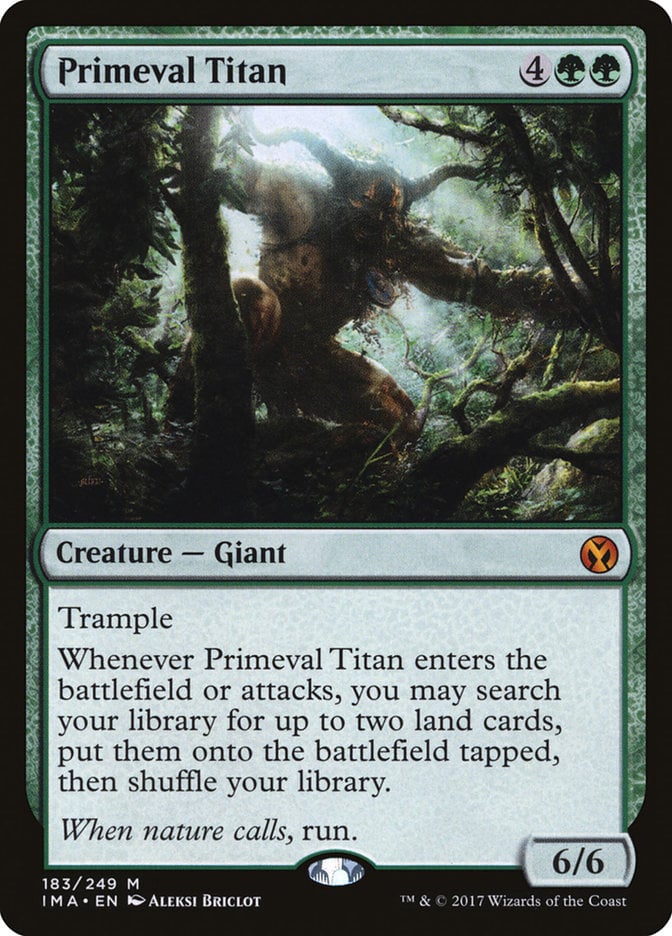
Primeval Titan isn’t the first creature on this list that warps gameplay around itself, and it isn’t the last. The problem with the card is that the best thing to be doing in a game often devolves into cloning, stealing or reanimating Primeval Titan, and the players that aren’t playing one or ways to benefit from one being in play are left far, far behind. Being able to fetch up Gaea’s Cradle and Cabal Coffers is also pretty egregious, too.
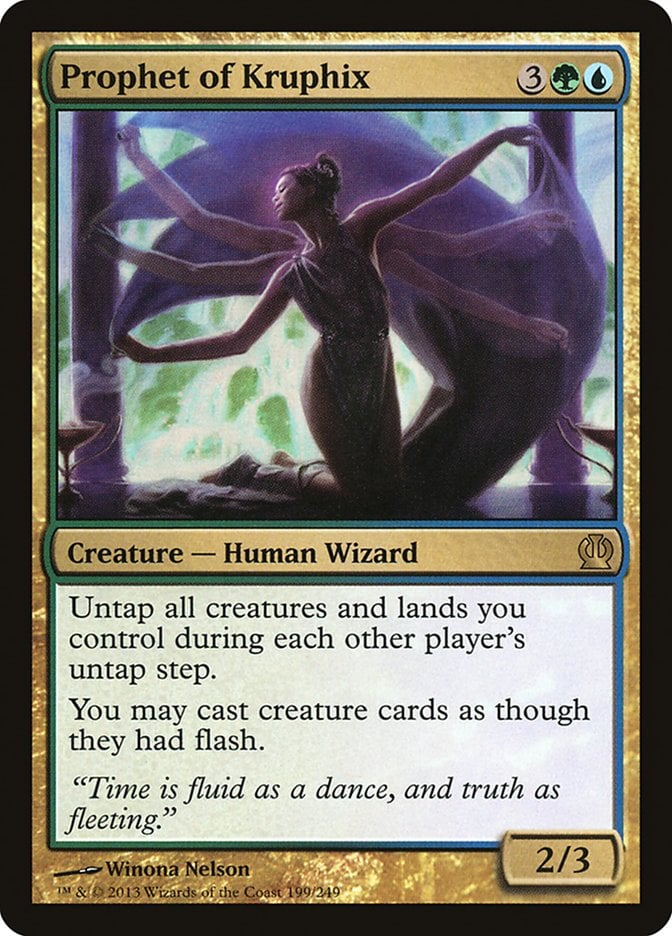
Seedborn Muse and Vedalken Orrery are already annoying to play against because of how powerful they are, and Prophet of Kruphix combines those effects into one card. You’d be silly not to play with this card, and like Primeval Titan, if you weren’t running one or more ways to benefit from your opponent’s copy, what were you even doing?
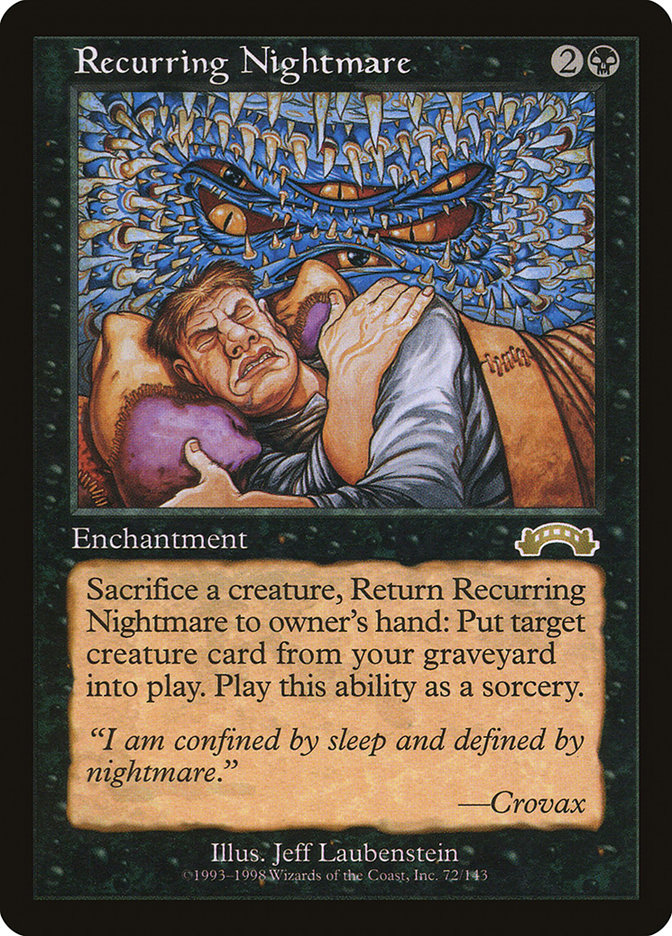
The best piece of reanimator tech in the game, Recurring Nightmare is ridiculously good. Looping creatures with this is incredibly easy to do, and what’s more, it’s hard to interact with, given returning it to hand is a cost rather than part of the ability resolving.
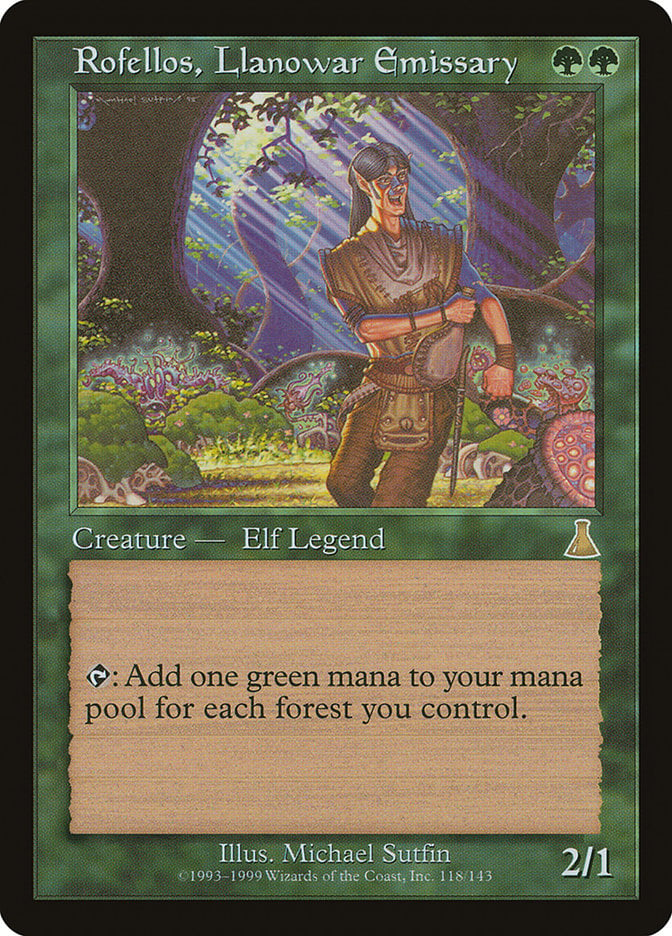
Rofellos provides level of mana acceleration in the Command Zone is simply too good. It takes very little effort to untap with six mana on your third turn — all you have to do is play three Forests in a row. It’s incredibly unbalanced, and gets worse when you add in all the ways to untap creatures.
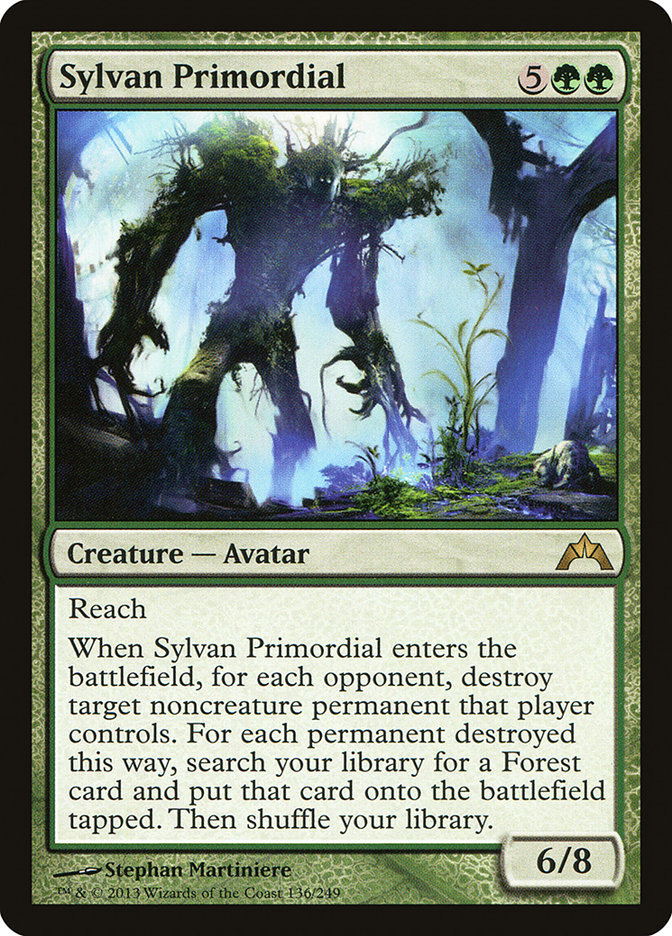
If you thought Primeval Titan could take over a game, hold onto your butts. Sylvan Primordial is bonkers in multiplayer, thanks to its ability to ramp you by three while removing three noncreature permanents at the same time, all for seven mana. It’s arguably one of the most efficient multiplayer spells ever printed.
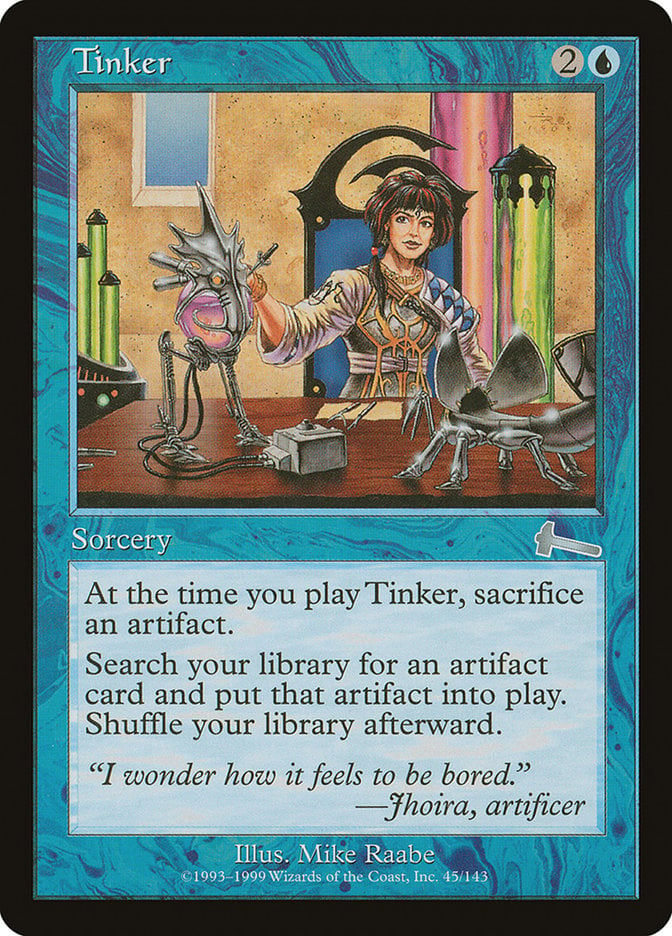
Tinker is to artifacts what Recurring Nightmare is to reanimator strategies. Having a tutor spell that can grab out any artifact in your deck by sacrificing something as inconsequential as a token is one of the most powerful toolbox effects in the game. This card is just never bad.
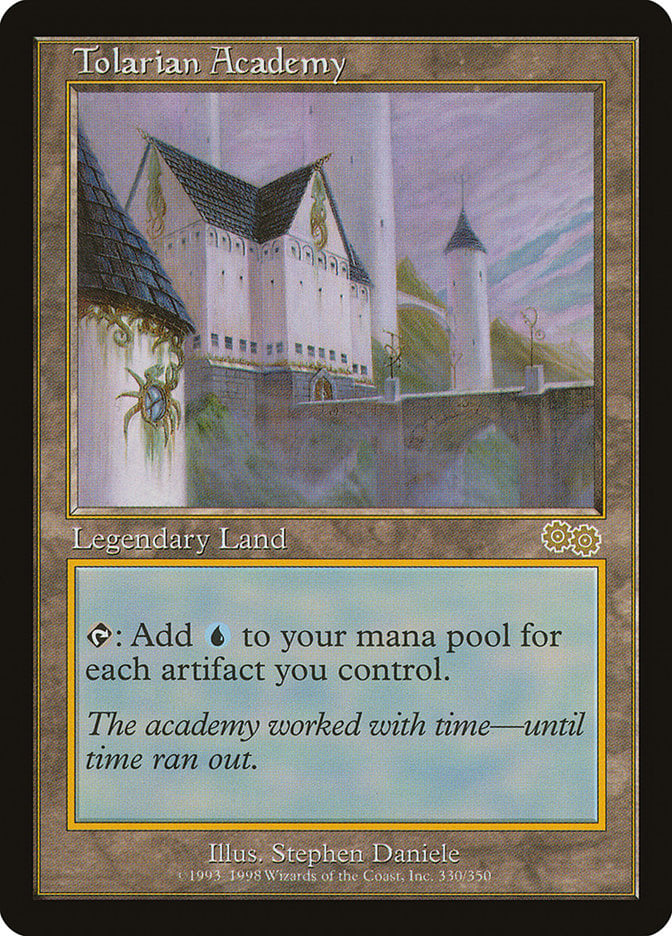
Tolarian Academy gives access to more mana than you probably know what to do with. Artifacts are easy to cast, easy to piggyback on, and easy to win with. Tolarian Academy is simply too powerful to exist in the format.
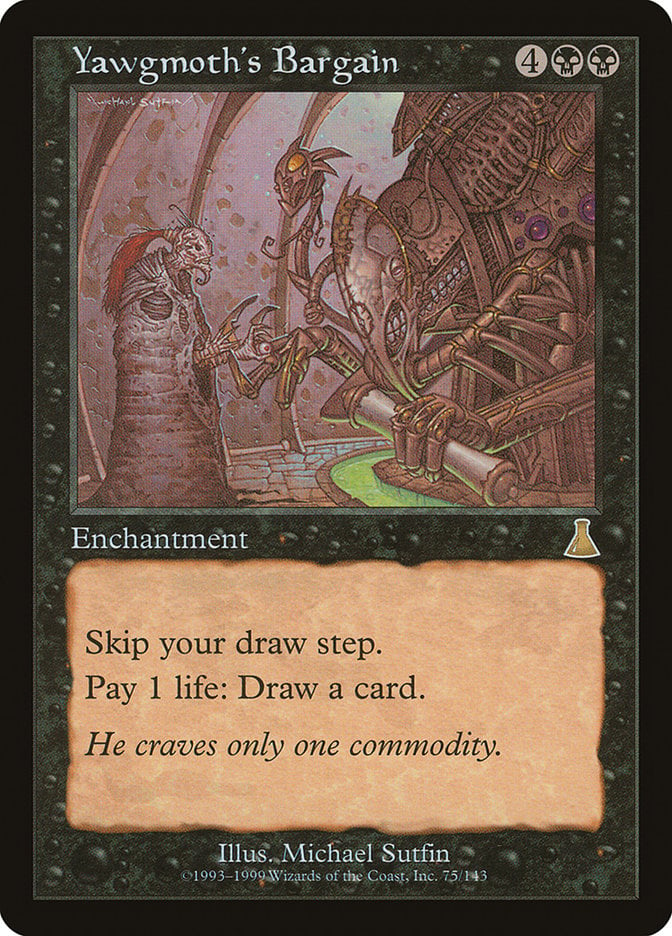
What makes Necropotence balanced is that you don’t draw the cards right away, and anything you discard ends up being exiled. With Yawgmoth’s Bargain, though, you’re far less limited in your degeneracy.

Four mana on Turn 1 or five mana on Turn 2, Jeweled Lotus can power out a higher cost Commander way ahead of curve. While there is a restriction as to what you can do with the mana, four and five mana Commanders can be very strong these days. Given so many of them often draw cards to replace the Lotus, or have defensive abilities like Ward, Jeweled Lotus is too powerful for the format.
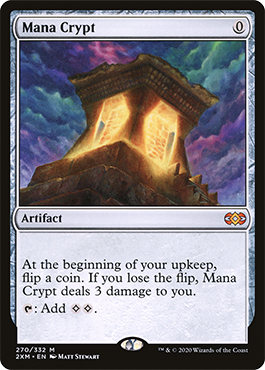
Coming down for free, Mana Crypt can enable all manner of explosive starts. When games only last 6-8 Turns – and Mana Crypt is able to propel one player ahead in turns significantly, especially when paired with other mana rocks – it makes for incredibly lopsided gameplay. The downside of Mana Crypt – being bolted on your upkeep – matters less when Commander games don’t hit the 10+ Turn mark of battlecruiser Commander of old.
Cards That Are Too Easy to Break
These cards are just flat-out too easy to break, and in many cases, they unbalance the format by giving certain decks a leg-up over the competition.

Flash was banned in Commander in 2020 because of how it warped the competitive EDH meta. cEDH players were heavily incentivized to incorporate the Flash/Protean Hulk combo into their decks, as no other viable decks came close.
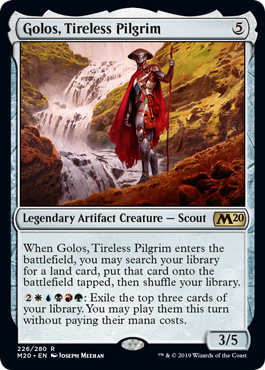
Golos finds itself in the unfortunate position of being the de facto “best in slot” commander for many strategies that aren’t overwhelmingly commander-centric. Flicker? Sure. Mono-White good stuff? Why not. Mono-Black? Yeah, I’ll go tutor out Cabal Coffers and we’ll (I’ll) have a great time. There are two factors that tip it over the edge: first, the fact that the ramp on ETB reduces its commander tax to effectively one; second, the opportunity to cast spells for free for the rest of the game without depleting resources in hand. While Golos wasn’t broken at the very highest levels of play, it did over-centralize the metagame at casual LGS tables — and so, it had to go.
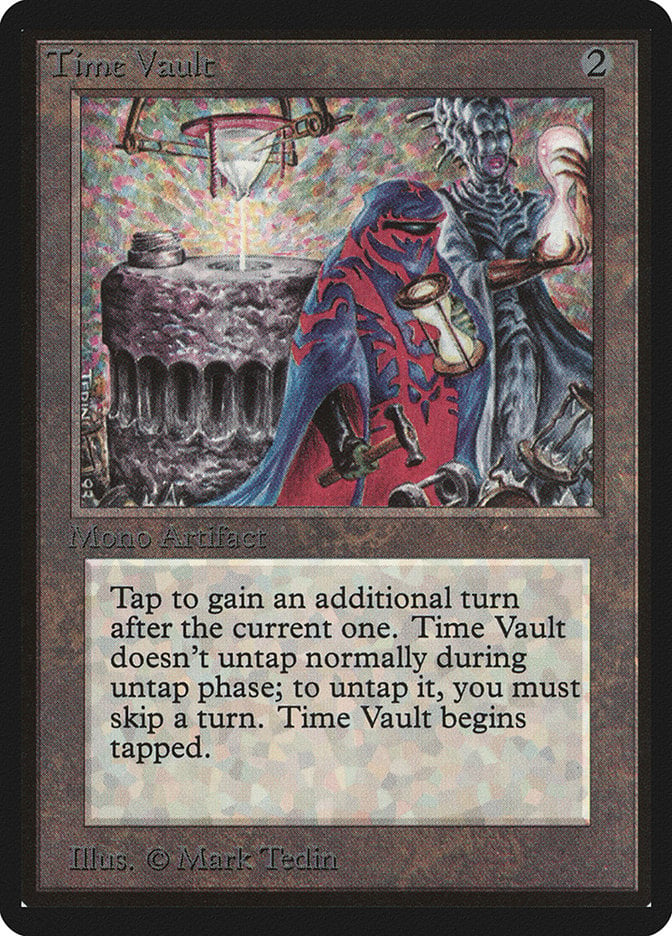
Time Vault doesn’t untap naturally. Big deal. Between Manifold Key, Clock of Omens and Voltaic Servant to name just a few, it’s really not difficult to just use this every turn. The card’s busted, and good luck getting a hold of a copy.
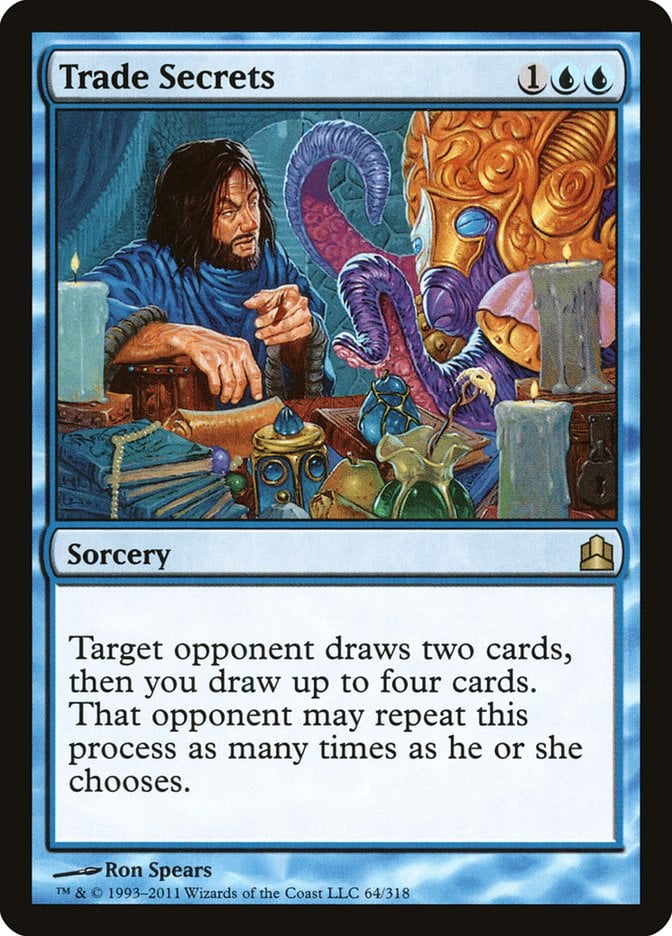
Trade Secrets is the hallmark example of how certain cards are fine in 1v1 Magic, but utterly broken in multiplayer. This card essentially reads, “Choose target opponent — you and that opponent each draw a ludicrous amount of cards.” It unbalances games horridly, and has no place in a social format.
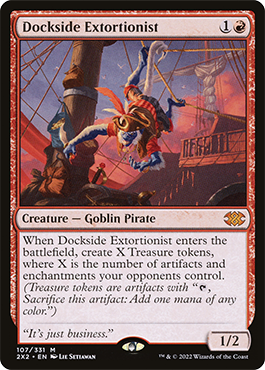
Dockside Extortionist can, sometimes, be a pretty medium card. The issue is that the floor of the card (when it’s only making three or four mana) is still way too high, because Dockside is a card that can be looped, reanimated, flickered or cloned to such a degree that simply making an extra treasure or two is still enough to win the game.
When you put Dockside into games that drop more mana rocks and other permanents on T1-2, it can make an egregious amount of mana as early as Turn 2. The massive tempo swing catapults the Dockside player too far ahead of the rest of the table.
It doesn’t help that one of the prevailing strategies in recent years has been artifact tokens: Clues, Foods, Maps, Blood… all of these casual strategies made Dockside a big red flag at Casual tables.
Cards That Are Unfun to Play Against
The following cards are banned because they don’t mesh with the goals of the format. Commander is a casual and social format where fun is not a zero-sum game.

On the surface, Balance looks to answer some of white’s shortcomings in EDH. When all’s said and done, though, it’s against the spirit of the format, and can lead to some really awkward game states — especially when it’s cast by an inexperienced player. The real nail in the coffin for this card is the fact it forces discard on top of everything else.
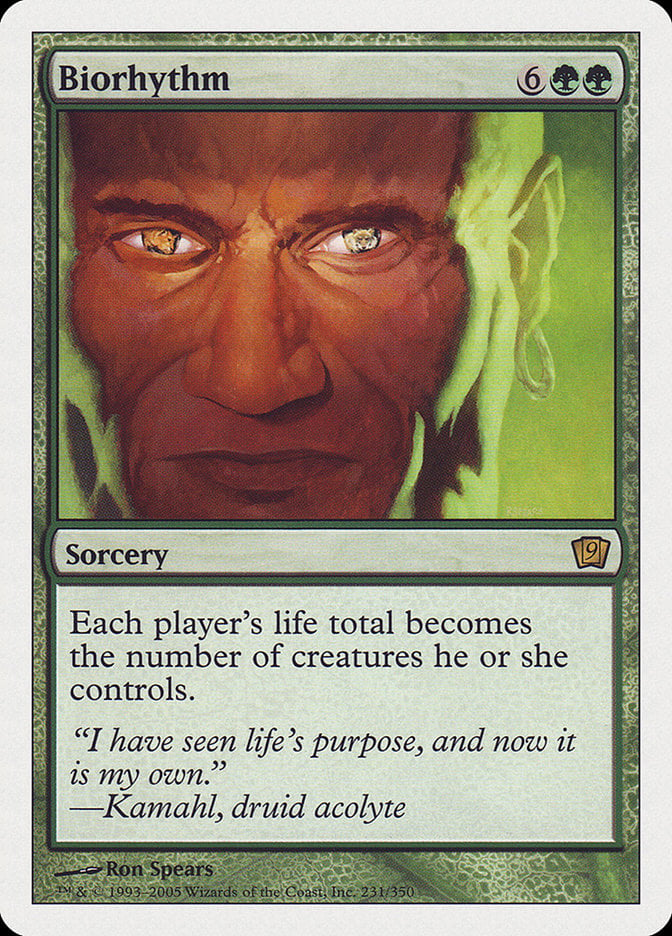
What makes Biorhythm so obnoxious is that it can completely invalidate a game. With each player jockeying for position and gaining incremental advantage, all it takes is for the player going after the board wipe to play a mana dork and a Biorhythm and end the game. What makes it worse? The propensity for it to cause draws when someone has removal for that lone creature.
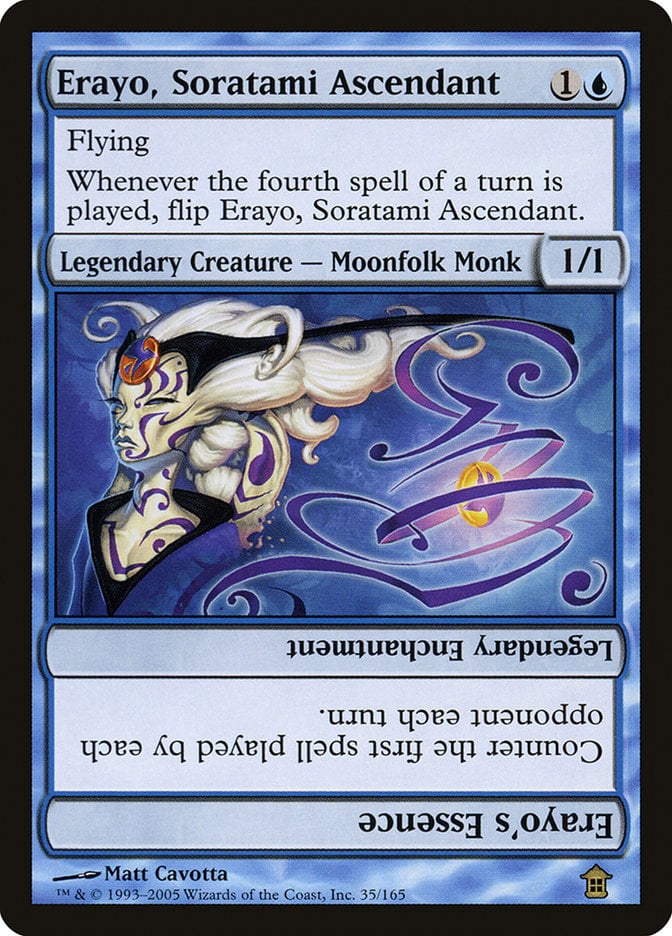
Erayo threatens to end the game before it even starts if you have the right draws. Many decks will struggle to play out of the counter effect from flipping Erayo into an enchantment, and fewer still will have enough cheap disenchants available early to punch through if the worst happens.
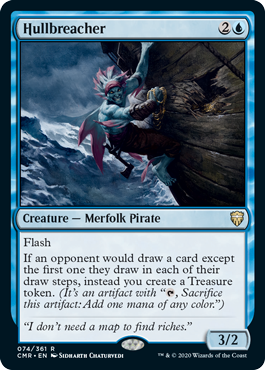
Hullbreacher is an incredibly punishing card that proved to be stifling player experiences at all levels of play. Backbreaking in casual, and format warping at competitive tables, Hullbreacher‘s asymmetrical resource denial that concurrently generates a massive advantage proved to be too much. Like Leovold, Hullbreacher is pure anti-fun.
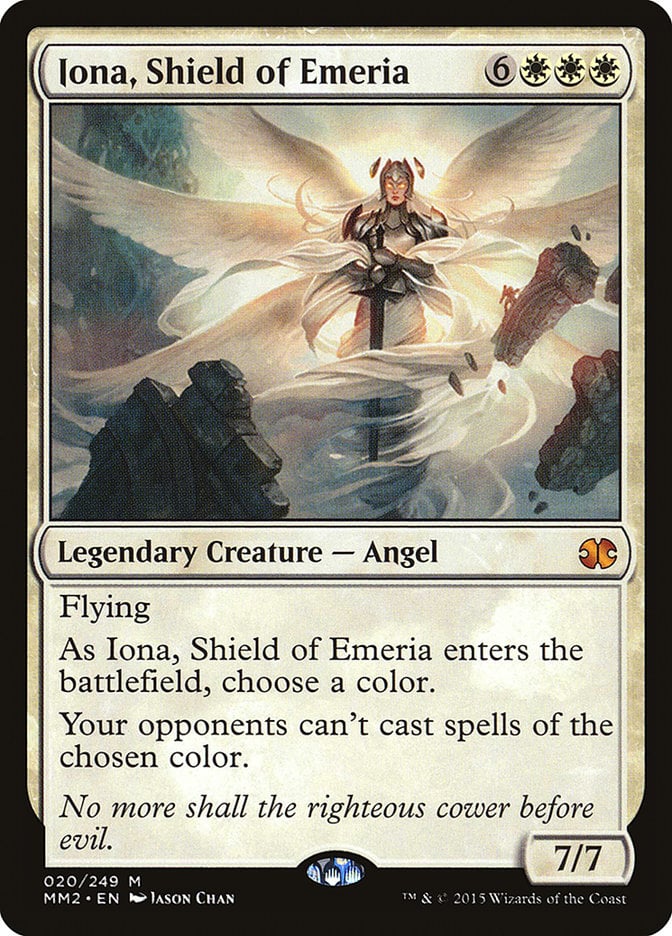
Iona is banned because she can lock a mono-colored player out of the game all by herself. Though she’s expensive to cast, she’s also really easy to cheat into play. What’s more, the likelihood she’ll be stolen or cloned and lock the white player out instead is very high. She also traded places with Painter’s Servant on the banlist, as both cannot exist simultaneously in the format.
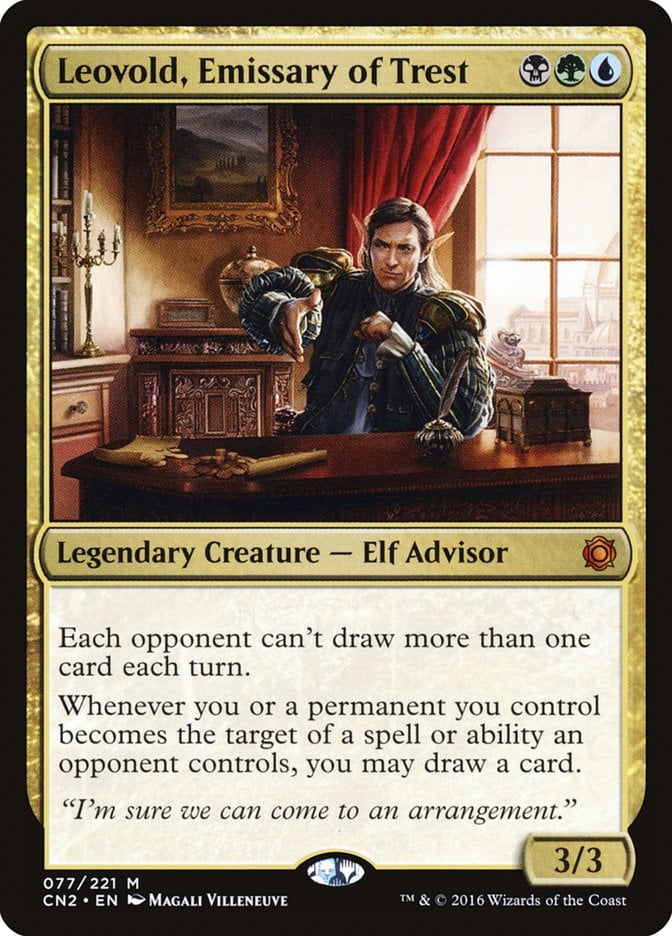
Leovold, like many cards on the list, is just miserable to play against. Having access to such a strong stax piece in the Command Zone that gives access to one of the strongest color combinations in the game is just too much. Denying card draw is fundamentally unfun.
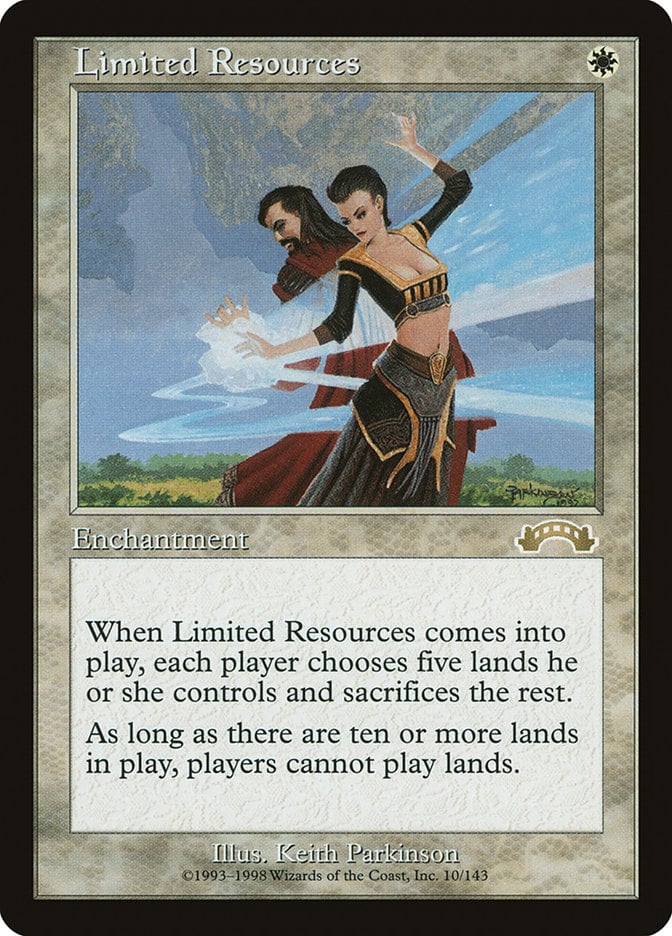
Because of how multiplayer works, Limited Resources can completely end a game when it comes down. Limiting the number of lands in play to ten after making players sacrifice lands means that some players might end up with no lands in play and no way to play any more.
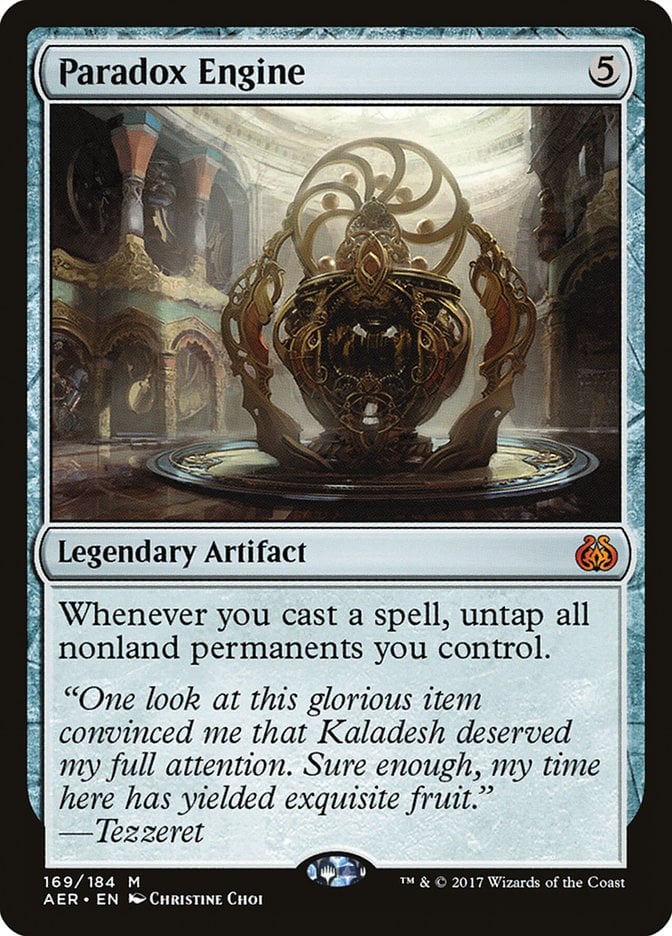
The Paradox Engine combo doesn’t always quite work out, and when it doesn’t, you’ve still taken up a long time fiddling around with it. Like Panoptic Mirror, this card could sit in both the “Too Easy to Break” and “Unfun to Play Against” camps, and the common thread is that they both steal too much of the clock time in a multiplayer game.
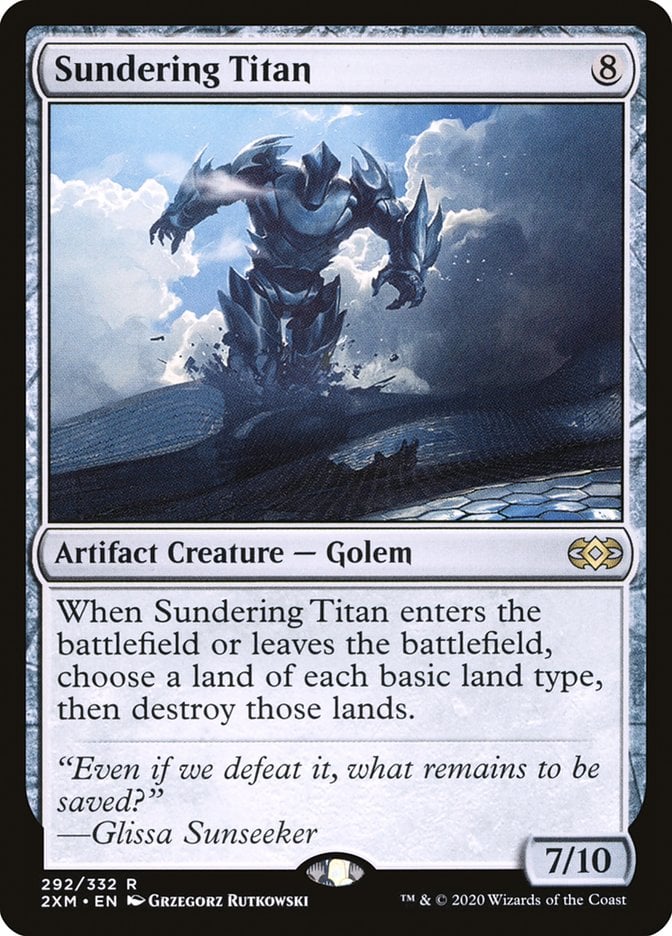
Sundering Titan is a mass land destruction spell that’s very easy to keep looping, which is enough justification to have it banned. This card is extremely unfun to play against, especially as it’ll punish casual budget mana bases just as much as the player with the mana base worth more than a car.
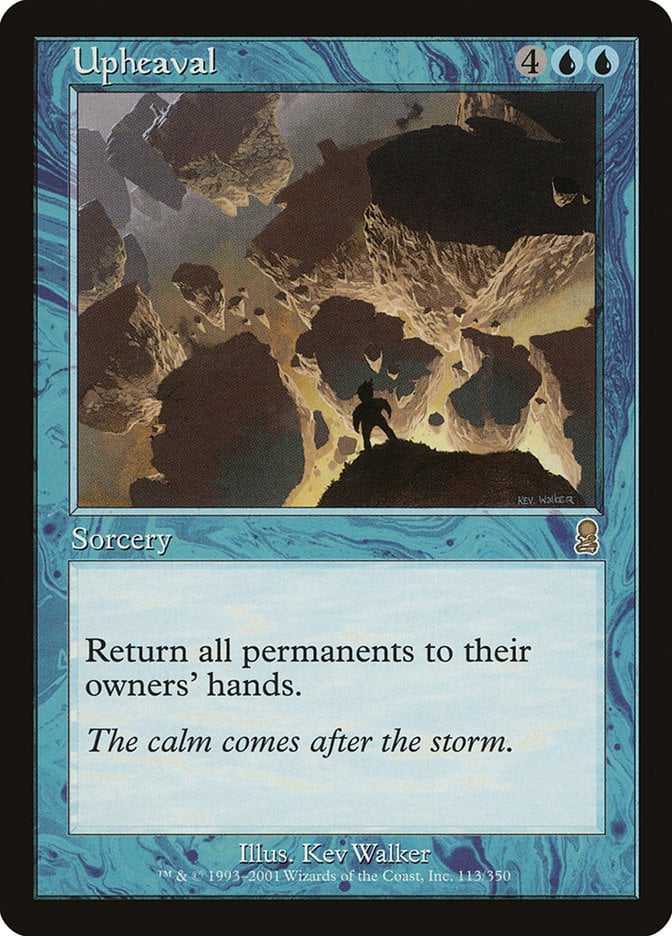
Resetting a game is never a good option when four people’s enjoyment is at stake. Upheaval saps fun, invalidates the game completely, and is also not a fast way to win. Again… boring.
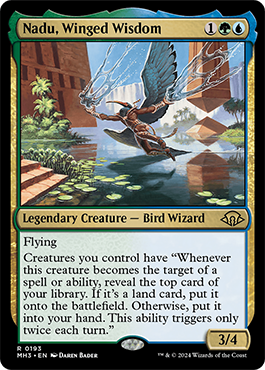
Nadu has been banned in multiple formats now, and also sees a ban in Commander for a similar reason. It’s a nondeterministic win condition that hogs the chess clock in such a way as to be very anti-social. The Commander format above all seeks to promote a casual and social experience, and cards like Nadu aren’t in line with that ethos. It “combos” with EDH staples like Lightning Greaves and can really slow down the tempo of a game.
The Rest
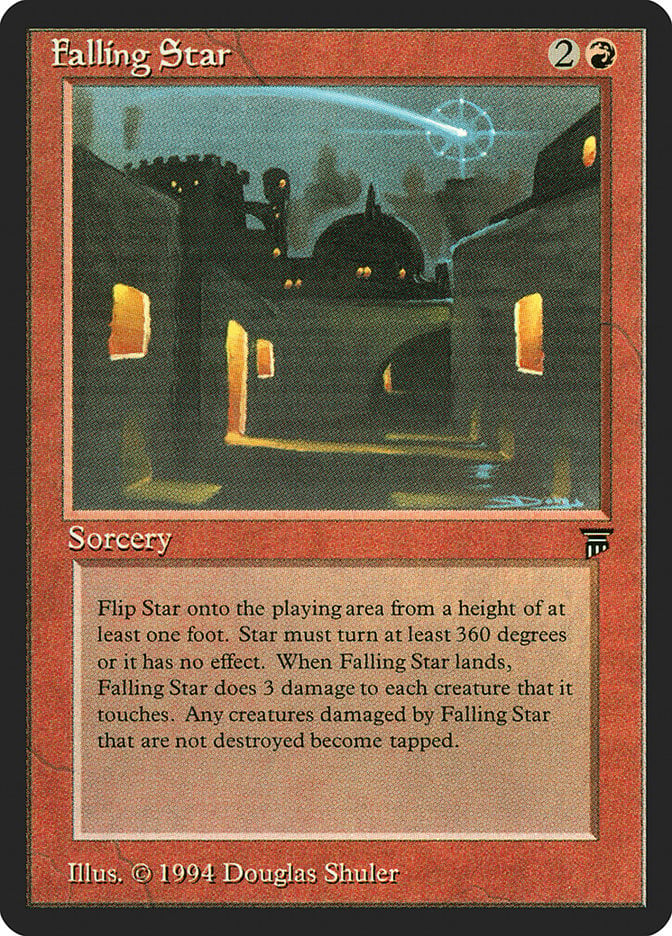
Falling Star is one of the least impressive cards on this list. It’s here mainly due to how impossible it is to make it “work” within the rules and how awkward it is to resolve — not to mention the headache of trying to save space on the table by stacking tokens or other creatures and having somebody place Falling Star onto the stack. The accessibility barrier it presents also doesn’t help.

Games of Commander are long enough without starting a sub-game. Who has time or space for that?
COMMANDER GAMECHANGERS
The Commander format also features a Bracket System and Gamechanger cards. To learn more about those, head over to our articles:
- Commander Brackets Beta Update
- What is the New Commander Bracket System?
- What is a Game Changer in Magic’s Commander Format?
Learn More
We hope you’ve found this article on what’s banned in Commander to be useful.
If you’d like to learn more about the governance of the format, consider heading over to the Commander Rules Committee website, where you can find detailed information and updates about the format as they happen. They also have a lively Discord server where you can talk with the Rules Committee and the Commander Advisory Group and get help and tips. It’s a great place to learn more about the philosophy behind one of Magic’s most popular formats.

Kristen is Card Kingdom’s Head Writer and a member of the Commander Format Panel. Formerly a competitive Pokémon TCG grinder, she has been playing Magic since Shadows Over Innistrad, which in her opinion, was a great set to start with. When she’s not taking names with Equipment and Aggro strategies in Commander, she loves to play any form of Limited.

